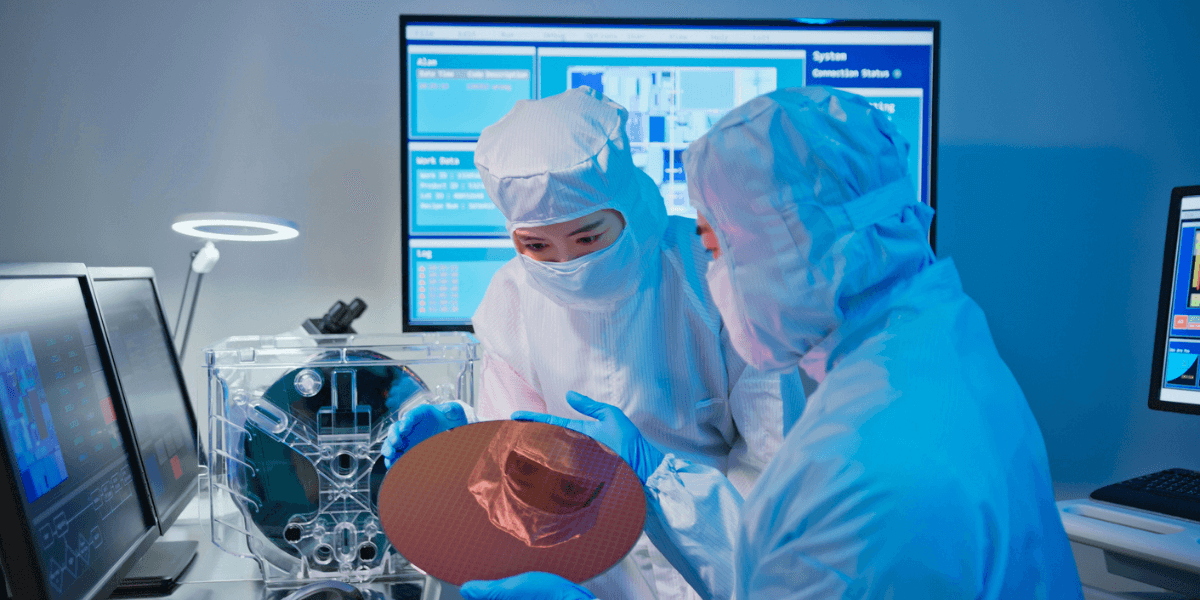California Semiconductor Workforce Data Reveals Major Gap Between Industry Projections and Reality

A new workforce analysis presented by Andrea Belz, Director of Translational Strategy for California DREAMS – one of the eight Microelectronics Commons Hubs led by the Information Sciences Institute at the USC Viterbi School of Engineering- has uncovered a disconnect between national semiconductor industry projections and current hiring patterns in Southern California. The findings raise critical questions about workforce development priorities as the U.S. works to compete globally in chip manufacturing.
At the CA DREAMS annual meeting in Marina del Rey on October 9, 2025, Belz presented a data-driven look at the workforce challenges shaping the U.S. semiconductor industry, offering both a sobering national perspective and an optimistic view of how targeted innovation can help bridge the talent gap.
“The CHIPS and Science Act has two goals,” Belz explained. “One is to build strategic capabilities, and the other is to generate employment opportunities. But to understand how to create those jobs, we first have to measure what demand really looks like.”
A Real-Time Workforce Assessment
Following her difficulties to trace the origins of widely-cited workforce projections, Belz – who is also Vice Dean of Transformative Initiatives at USC Viterbi School of Engineering – and her colleague Karen Markel of the University of Colorado Colorado Springs developed a novel approach using techniques known as Labor Market Intelligence.
“This approach demonstrates how the interdisciplinary collaboration between engineering and human resource management has resulted in a novel methodology for gauging regional workforce demand in the semiconductor industry through the utilization of active job postings,” said Markel, Professor of Management, College of Business, University of Colorado Springs. Markel serves as CA Dreams Workforce Development Research Director.
Their system, called “JobPulse,” uses data science methods to crawl and analyze job postings on major employment platforms, filtering for semiconductor industry positions and categorizing them into scientists, engineers, technicians, and operational support roles.
The methodology, which has been validated in European labor markets, offers significant advantages over traditional survey methods. “It’s scalable and can be completely automated,” Belz explained, suggesting the approach could enable “real time dynamic flexible assessment of workforce demand across industries to inform policy interventions.”
They tracked semiconductor job postings across Southern California, analyzing more than 12,000 online listings and distilled them into approximately 4,000 relevant positions, revealing key discrepancies between projections and reality.
Scientists needed 4 times more than technicians
“We found roughly a 20% shortfall in the local semiconductor workforce,” Belz said. “Within that shortfall, the demand for engineers is three times higher than the demand for technicians, which is the opposite of what national projections suggested.”
“Our analysis shows that collecting current job postings is a more accurate estimate of workforce demand than typical methods (e.g. surveys and interviews), especially for the project sponsor’s interest in building the required talent to support the industry infrastructure development,” added Markel.
As context, Southern California is home to about 5% of the national semiconductor workforce. Her team found that more than 1,100 employers are advertising positions in the region. Major recruiters include aerospace and defense firms.
The project challenges a prevailing assumption in Washington: that semiconductor manufacturing jobs can scale like other manufacturing industries, with large numbers of entry-level technicians. “Just because you build things doesn’t mean it requires the same skill set,” Belz said. “Our data suggest the demand in the semiconductor industry for lower-education roles is not as high as one would hope.”
Previous projections from 2023 by the Semiconductor Industry Association’s predicted high needs in technicians, at the ratio of roughly two per engineer. The USC study shows the opposite, revealing a 4-to-1 ratio favoring scientists in job postings.
The China Factor
The research comes amid growing concerns about U.S. competitiveness in semiconductor technology. China produces four times more STEM graduates than the United States, with 41% of Chinese graduates pursuing STEM fields. American graduates choose STEM only 20% of the time. Additionally, as recently as 2023, Chinese startups attracted 75% of venture capital funding flowing into chip companies.
“China is making inroads in education, in research and also in startups,” Belz noted, highlighting data showing that acceptance rates of Chinese papers submitted to a major chip conference had overtaken North American rates by 2023.
“Although our approach aligns actual worker demand, encompassing both job function and skill level requirements, it is imperative to consider the broader competition for this education and experience. The semiconductor industry is not the only one needing this talent,” highlighted Markel.
The domestic talent pipeline faces additional challenges. Data from the National Science Foundation shows that American student enrollment in semiconductor-related PhD programs has remained essentially flat over nearly 30 years, while foreign enrollment has grown substantially.
Policy Implications
The findings have significant implications for workforce development strategy, particularly as the CHIPS and Science Act seeks to rebuild domestic semiconductor manufacturing capacity.
The data suggests that the initiative to introduce workers with lower education levels into the industry may face more limited opportunities than policymakers had hoped. At the scientist level, the West Coast produces an estimated 40 Ph.D.s annually in fields closely related to the technologies under development in California DREAMS while the demand appears to be closer to 500. However, these positions would presumably also draw from doctorate degree recipients from prior years, as well as recent graduates from other regions of the country.
The research gained national attention when Belz was interviewed by NPR’s Marketplace about the findings. “I think we had him at ‘China has four times more STEM graduates than we do,'” she remarked about the interview with host David Brancaccio.
As the semiconductor industry continues to expand under the CHIPS and Science Act, Belz’s team will focus more attention on the general education requirements associated with industry growth.
Distribution Statement A: Approved for public release. Distribution is unlimited.
Published on November 10th, 2025
Last updated on November 10th, 2025